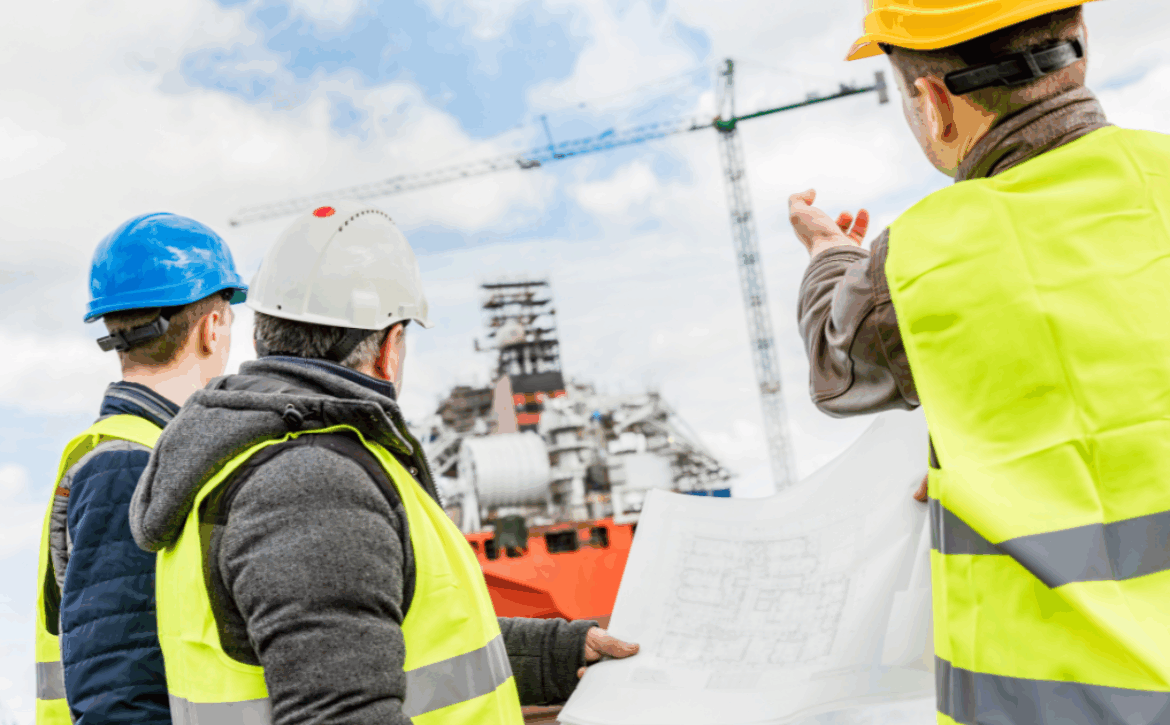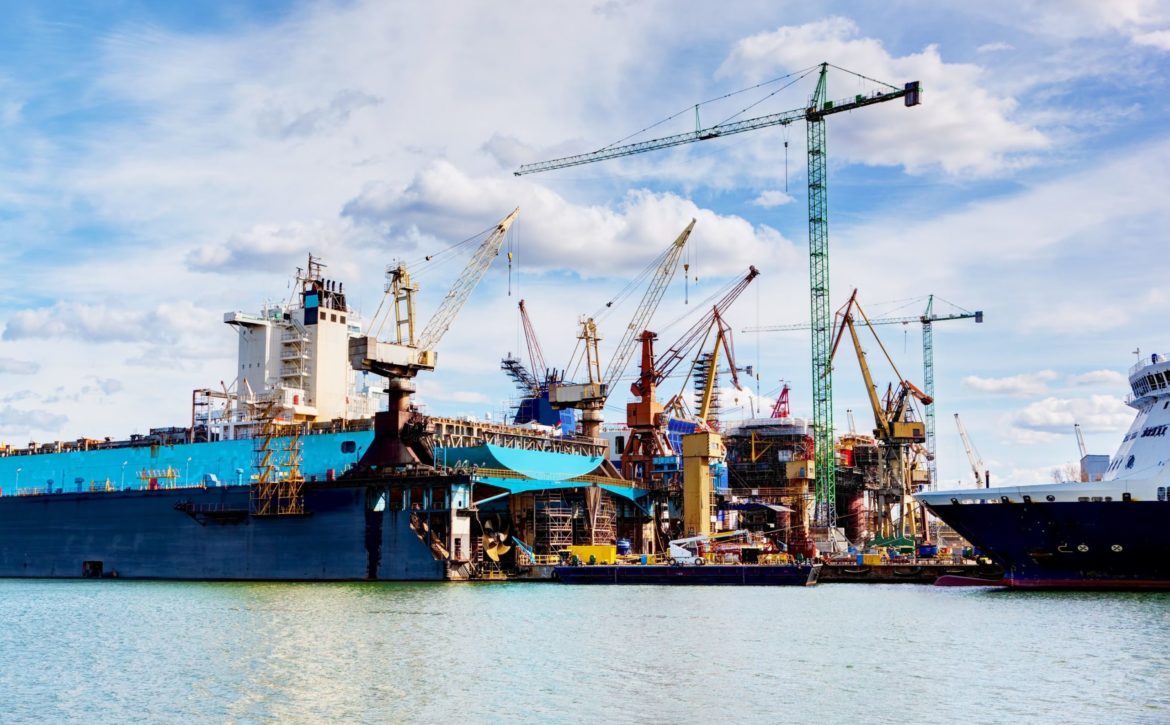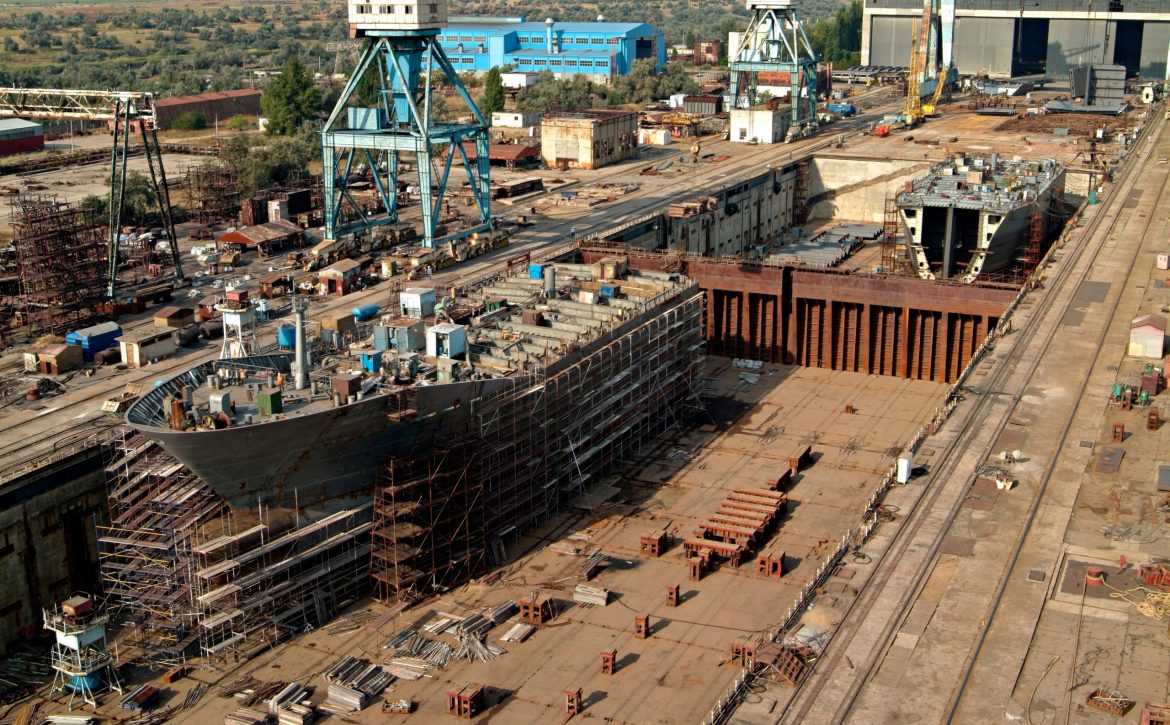5 Criteria That Define a Top-Tier Marine Surveyor
A marine surveyor, within the complex and capital-intensive landscape of shipbuilding, defines the quality of a vessel, its compliance with regulations, and the successful and cost-effective delivery of the project. Whether you are in charge of a new build, a ship conversion program, or are selecting a shipyard, the surveyor you choose will influence the outcomes of more than mere safety, efficiency, or operational longevity. At Risk Design International, we have understood the considerations surrounding new shipbuilding for long-term successful outcomes. With experience in Europe, Africa, and the Americas, this article defines the five criteria that focus a top-tier marine surveyor, and what every shipowner, classification society, or oil and gas company should look for before hiring a site supervision professional.
What Defines a Top-Tier Marine Surveyor?
The position of a marine surveyor has undergone significant changes in the world shipping and maritime industry. Not so long ago, they were seen as mere check-box tickers for compliance checking; they are now required to be strategic advisors, process optimisers, and technical specialists as well. Higher standards – driven by more sophisticated vessels, increasingly demanding environmental stewardship, and rising project costs – have set the bar high for marine professionals.
So, what does it mean to be a top-tier marine surveyor in 2025?
A Critical Link Between Shipowners and Shipyards
Marine surveyors are the on-the-ground eyes and ears of shipowners. From steel cutting to delivery, they supervise the construction of a ship to ensure it complies with contractual requirements, rules, regulations, and project milestones. But the finest of surveyors do more than simply see. They understand the technical details, anticipate issues before they arise, and act as a bridge in advance between shipyards, classification societies, and project members.
In that regard, A-list surveyors not only preserve a project, but they can also add value. For shipowners, that means fewer surprises, managed costs and peace of mind through a long and unpredictable build cycle.
Navigating Rising Project Complexity
The most modern ships are becoming increasingly complex. Whether building an LNG-powered tanker, a DP2 offshore supply vessel or a hybrid-powered passenger ferry, shipbuilders will need to assimilate sophisticated propulsion systems, electronics, emissions control and automation technology — each the domain of the marine surveyor.
As such, high-level marine surveyors must stay current with:
- Rapidly evolving IMO and IACS standards
- Alternative fuel systems and environmental compliance
- Integrated digital systems (e.g., remote monitoring, AI diagnostics)
- Shipyard-specific building practices and cultural workflows
- The fine print in shipbuilding contracts and specification clauses
These evolving demands make generic supervision inadequate. Surveyors must be specialised, cross-functional, and up to date on the latest engineering practices and compliance requirements to be truly effective.
Accountability and Autonomy in Remote Environments
Shipyards are often located in regions far from shipowners’ headquarters—whether in Turkey, South Korea, China, or Brazil. This distance makes the independence and reliability of a marine surveyor absolutely crucial.
A top-tier marine surveyor works with autonomy and integrity. They are trusted to:
- Identify and resolve non-conformities without needing daily instruction
- Make on-the-spot decisions that align with the owner’s best interests
- Document progress in a way that’s verifiable and traceable
- Maintain professionalism under pressure from contractors or deadlines
At Risk Design International, we’ve found that autonomy, when paired with structured digital reporting and project management, builds the highest levels of accountability and transparency—two non-negotiable traits in top-tier supervision.
The Impact of a Top-Tier Surveyor on Project Outcomes
A marine project supervised by an average inspector versus one overseen by a top-tier surveyor can diverge drastically in outcome. Poor supervision can result in:
- Missed Class or Flag compliance
- Delayed approvals and handovers
- Costly rework or warranty claims
- Safety hazards due to overlooked workmanship errors
- Legal disputes due to vague reporting or contract misinterpretation
On the other hand, a top-tier marine surveyor drives positive results such as:
- Faster commissioning and on-time delivery
- Documented design compliance
- Reduced scope creep and contract deviations
- Proactive management of yard relationships and negotiations
- Better lifecycle outcomes for the vessel post-delivery
Ultimately, choosing a top-tier marine surveyor is not just about “checking a box.” It’s about investing in the success of your asset—maximising value, ensuring compliance, and reducing risk across the board.
Multifunctionality: The New Benchmark for Top-Tier
One of the defining features of a top-tier marine surveyor today is multifunctionality—the ability to competently manage multiple technical scopes such as structure, machinery, piping, HVAC, and electrical within a single individual or small team. This approach significantly reduces overhead while increasing on-site responsiveness.
At Risk Design International, we carefully recruit, cross-train, and equip our multidisciplinary surveyors and foremen to provide Supervision of quality without overpopulating our projects. This belief has enabled our customers to save money and achieve operational excellence.
More Than a Job—A Professional Standard
Being a top-tier marine surveyor is not merely about seniority or certifications. It’s a standard of performance, built on:
- Deep technical fluency
- Broad field experience across vessel types and regions
- Clear, timely reporting and communication
- Commitment to safety, accuracy, and client value
- Strategic cost-conscious thinking
5 Criteria That Define a Top-Tier Marine Surveyor
Now, let’s look at the five core criteria that distinguish the best marine surveyors in the industry today—criteria that every shipowner, classification society, or oil & gas technical director should demand when choosing their site supervision team.
1. Comprehensive Technical Competence
A qualified marine surveyor must possess deep technical knowledge of shipbuilding processes, materials, classification standards, and international regulations. This includes:
- Hull construction and steelwork
- Outfitting and machinery systems
- Electrical and automation systems
- IMO, SOLAS, MARPOL, and Class rules compliance
- Environmental performance regulations (EEDI, BWMS, etc.)
Without a complete understanding of ship design and construction processes from steel cutting to delivery, a surveyor cannot effectively verify quality or spot deviations early.
At Risk Design International, we maintain a rigorous internal certification process, ensuring that every multifunctional surveyor we assign has demonstrated expertise across key disciplines—structural, piping, electrical, and HVAC—thus eliminating the inefficiencies of overly segmented teams.
Note: A 2022 study in the Marine Structures journal found that project outcomes significantly improved when site inspectors had cross-disciplinary training, reducing design change requests by 18% and improving delivery timelines by 14%.
2. Proven Experience in Ship New Building Supervision
Marine surveyors are not interchangeable across all vessel types and projects. Experience in specific vessel categories—tankers, bulk carriers, offshore units, passenger ships—matters greatly. A top-tier marine surveyor should demonstrate:
- Involvement in multiple new building projects from contract to delivery
- Familiarity with shipyard procedures across various regions
- Practical knowledge of contractual clauses and change-order negotiations
- A history of successful interactions with classification societies
Furthermore, surveyors should contribute beyond oversight—participating in design reviews, identifying cost-optimisation opportunities, and mitigating delays.
3. Ability to Optimise Supervision Resources
Shipbuilding supervision is a resource-intensive function. A top-tier marine surveyor understands how to balance comprehensive oversight with cost control. The modern shipowner does not need ten different inspectors—they need one or two multifunctional professionals with clear communication tools and accurate reporting.
We believe that the days of bloated site supervision teams are over.
Risk Design International pioneered the use of multifunctional marine surveyors—professionals who are trained and certified to cover several technical scopes. This approach has enabled our clients to reduce their supervisory budgets by up to 30% without compromising quality or compliance.
This efficiency is further enhanced through our partner SEAVIZOR software, which provides real-time progress tracking, quality control logs, photo documentation, and digital approvals—all accessible by shipowners from anywhere in the world.
Note: According to a 2021 report by Clarkson Research, digital supervision tools are becoming a standard requirement among top-tier shipping companies, especially for builds exceeding 10 months in duration.
4. Fluent Communication and Reporting
One of the most underrated yet crucial skills in marine supervision is clear and timely communication. A surveyor must not only spot issues but articulate them in a format that shipowners, contractors, and class representatives can act on.
Characteristics of superior communication include:
- Daily or weekly progress reports with quantifiable metrics
- Photo and video evidence embedded in supervision logs
- Immediate alerting systems for deviations or delays
- Stakeholder briefings summarising milestones and risks
At Risk Design International, our partner SEAVIZOR platform ensures that reporting is digital, structured, and accessible in real time, avoiding misinterpretations and enabling proactive decision-making. Additionally, our surveyors undergo communication and reporting training to ensure every technical finding is translated into actionable insight.
5. Commitment to Safety Without Compromising Efficiency
A top-tier marine surveyor must lead by example in enforcing safety. They must ensure:
- Shipyard safety policies align with international best practices
- Contractors maintain risk assessments and safety permits
- PPE compliance and safe work execution are consistently monitored
- Potential design-related hazards are flagged early.
Yet safety should not come at the cost of agility. The best surveyors understand how to streamline inspections and approvals without creating bureaucratic slowdowns.
Case Study: Long-Term Supervision Partnership with P&O Maritime Logistic
Background
In 2019, P&O Maritime Logistic engaged Risk Design International Ltd. to supervise the construction of several vessels across multiple international shipyards. The client needed a partner who could ensure strict compliance with technical specifications and safety standards, while also controlling costs across lengthy and complex build schedules.
With operations spanning multiple regions, P&O Maritime Logistic required a supervision team that could move fast, communicate clearly, and deliver consistently, without the burden of managing large, traditional inspection teams.
The Challenge
The key challenges included:
- Coordinating supervision across different time zones and shipyard cultures
- Ensuring real-time reporting and visibility for project managers located outside the yard
- Maintaining a high standard of quality and safety throughout multi-vessel builds
- Optimising supervision costs without reducing oversight
Traditional site teams—built with multiple single-scope specialists—would have been costly and inefficient. P&O Maritime Logistic sought a smarter alternative.
Our Approach
Risk Design International deployed a lean supervision model using multifunctional surveyors—experts trained to handle structure, piping, machinery, and electrical scopes within one cohesive role. This eliminated redundancies and streamlined communications.
To support full transparency, we implemented SEAVIZOR, providing:
- Real-time progress tracking
- Embedded photo documentation
- Issue escalation and resolution logs
- Remote approvals and reporting access for shipowners
Our team also actively participated in reviewing technical documentation, flagging contract deviations early, and facilitating approval processes with classification societies.
Results
- Cost Reduction: P&O Maritime Logistic achieved approximately 25% savings on supervision costs compared to traditional team models.
- Transparency: Stakeholders received live updates via SEAVIZOR, reducing the need for mid-project travel.
- Quality Assurance: No major non-conformities were recorded at the delivery stage across all projects supervised.
- Safety & Compliance: The client reported consistent adherence to both Class and international safety regulations.
As Martin Kavlakov , Operation Manager at P&O Maritime Logistic shared in testimonial:
“Our company recently worked with Risk Design International Ltd. on a project involving the building/conversion of 7 MCV vessels. RDI provided a range of services including engineering support, feasibility study, supervision, and shipyard evaluation. We have found their specialists to be competent, and their performance and safety culture live up to the highest industry standards.”
Summary
This case study exemplifies how a top-tier marine surveyor, equipped with multifunctional skills and modern reporting tools, can not only meet but exceed expectations for quality, safety, and cost-efficiency.
Risk Design International continues to support P&O Maritime Logistic on future projects, proving that leaner supervision does not mean lower quality, but rather smarter execution.
Supplementary Qualities of a Leading Marine Surveyor
Beyond these five core pillars, the following supplementary qualities often separate an average marine surveyor from a truly top-tier one:
- Cultural Adaptability: Can the surveyor adapt to work cultures across Asia, Europe, and Latin America?
- Digital Literacy: Are they comfortable using project management tools, CAD viewers, and data-entry platforms?
- Contractual Awareness: Do they understand the nuances of change orders, liquidated damages, and Class Notations?
- Ethical Conduct: Will they uphold quality and transparency even under pressure?
At Risk Design International, we screen and train for all of the above—because clients deserve a team they can fully trust in high-stakes shipbuilding environments.
Why Risk Design International?
Choosing a marine surveyor is not just about credentials—it’s about outcomes. With over 30 years of combined international experience, Risk Design International helps shipowners:
- Select the right shipyard via detailed shipyard evaluations
- Optimise costs through lean supervision teams
- Get real-time oversight with SEAVIZOR reporting software
- Stay ahead of timelines and mitigate project risks
We offer support across Europe, Africa, and the Americas, and are committed to moving fast, working smart, and always prioritising safety. Our multifunctional supervision model has been successfully applied to tankers, bulkers, OSVs, and passenger vessels—always tailored to each project’s unique scope.
Marine Surveyors Are Project Gatekeepers
A marine surveyor is more than a site inspector—they are the gatekeepers of your project’s success. A top-tier professional protects your investment, ensures compliance, and helps your vessel enter service on time, on spec, and on budget.
Suppose you’re beginning a new building project, considering a ship conversion, or facing challenges with an ongoing build. In that case, it’s time to partner with surveyors who bring more than oversight—they bring foresight.
Work With Risk Design International
If you’re a shipowner, technical director, or shipbuilding project manager seeking:
- Expert supervision across multiple technical scopes
- Simplified reporting with full transparency
- Cost-effective team structuring without compromising quality
- Reliable partner support in Europe, Africa, or the Americas
Get in touch today to discuss your next project. Let’s build better—together.




